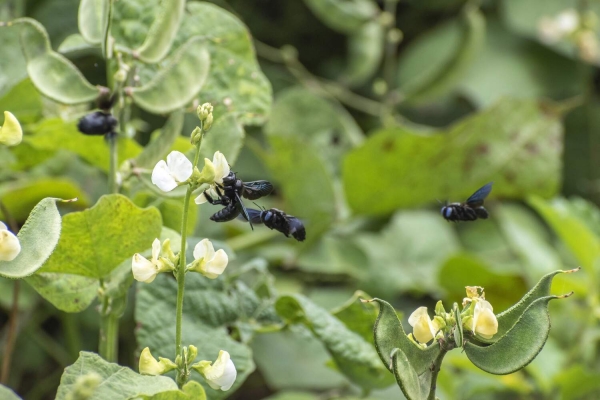Increasing urbanization worldwide is a growing threat to biodiversity. At the same time, flowering plants are often more diverse in cities than in the countryside. This is due to flowering plants and agricultural crops, which are increasingly being grown in cities. A recent study shows that the interactions between plants and pollinators, which are important for agricultural production, are surprisingly dynamic. For example, the plant and bee species involved in pollination vary greatly between the seasons. This was shown by an international research team led by the University of Göttingen. The scientists studied farms that produce vegetables in the southern Indian metropolis of Bengaluru – a classic example of a rapidly growing city in the tropics. Urbanization intensifies the seasonal differences in plant-pollinator networks, as a comparison of urban and rural cultivation areas revealed. The results were published in the journal Ecology Letters.
In order to identify influences on the interactions between pollinators and plants, the researchers analysed 36 vegetable-producing farms in Bengaluru every month for a year. In this way, they covered the seasons that are characteristic of the local climate: the mild-dry winter, the hot-dry summer and the rainy monsoon. The farms were distributed along two routes that ran from the city centre to the rural villages. The researchers recorded the bee species at each site, the plant species visited by bees, and the frequency of these interactions. From the data, they identified plant-pollinator networks for each location and each season. They analysed which factors explain differences in the interactions: the time of year, or the distance from the city centre, or the degree of urbanization as indicated by the proportion of “sealed surfaces” such as roads, buildings or pavements.
Read more at University of Göttingen
Image: Carpenter bees (Xylocopa sp) at Lablab in Bengaluru (Photo Credit: Vikas S Rao)


